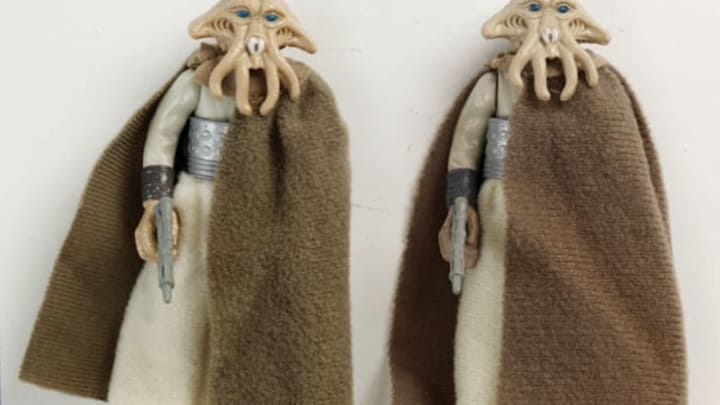‽ #205 - How much we don't know
When is world-building filling in gaps vs. expanding the universe of the story?

How much information is too much for your audience? What’s the difference between having a deep world to discover and a narrative encyclopedia full of overwhelming detail?
When thinking back on writing the Arlo Finch series, John used a sticky note to keep the worldbuilding focused and useful: Don’t build more than you need.
Antony Johnston comes at this from writing for games, and addresses some questions about how the level of detail affects the audience’s investment in a story and its world:
On the other hand, a character may know more than the audience. This is common in all kinds of storytelling, and only becomes a problem when the information is important to our enjoyment of the story. Does anyone know how spaceship engines work in Star Wars? Some of the characters surely do, but we don’t — because we don’t need to. All we need to know is that they do work, but sometimes the hyperdrive breaks down. Any more detail is completely unnecessary to our enjoyment.
Take the example of the questions asked in this scene from Arrival:
Some of these questions will be answered. Some remain a mystery. All are tied to the stakes of figuring out how to communicate with the aliens. And there are more questions the audience could be asking. A few answers are provided, and space is left for the audience.
There’s a balance between lore to create mystery and lore defined by dramatization. Noah Smith examines franchises that keep trying to find more stories to tell by filling in every gap in the audience’s knowledge:
For example, in the first Star Wars movie, there are two mentions of “the Clone Wars” [….] the original Star Wars movies never tell us what those wars were about, or what the sides were, or who won, or even why they were called “the Clone Wars”. They were simply an event that existed outside the story — part of the lore of the Star Wars fictional universe.
Two decades later, when George Lucas made the Star Wars prequels, he centered them around the Clone Wars. In doing so, he turned lore into story — he actually showed us the answers to all the questions above.
[….]
Lore-focused prequels also make the fictional world seem smaller and more circumscribed. In the first Star Wars movie, when you hear offhand references to “the Clone Wars”, it gives you a sense of mystery and adventure. Having those events exist outside the boundaries of the story makes the viewer feel that this is a universe filled with big important events, mighty warriors, dramatic clashes, and so on. But when you go and show all of those things on screen as part of a new story, the fictional universe starts to feel cramped and self-contained — you’ve seen everything important that happened in this universe, there are no mysteries left to explore.
Chuck Wendig describes how adding detail and explanation enters a point of diminishing returns:
Think of it like that old Tron lightcycle video game — at first you have ultimate freedom but eventually, your lightcycle is building literal walls behind it that you will soon be trapped by. You do not have an infinite range of movement. One day: you gonna crash.
The more you establish about characters and worlds, the less you can continue to establish about characters and worlds. You’re filling in a finite number of boxes. It’s a crossword puzzle — all the things have to line up. Which, on the one hand, is an amazing achievement in narrative. But, on the other hand, is really, really difficult, and eventually maybe almost impossible.
As a writer, you’ll know more about the world of your story than the characters or your audience. You’ll have to contend with how much of that knowledge is essential to share, and how best to do it.
👋 Are you new here?
Inneresting is a weekly newsletter about writing and things that are interesting to writers. Subscribe now to get more Inneresting things sent to your inbox.
Previously on Inneresting…
In case you missed it, last issue’s most clicked link Meg Miller shares a collection of better ways to end your emails.1
What else is inneresting?
Kathleen Schmidt questions current beliefs about the way things are now for debut authors.
Explore the Smithsonian Open Access collection with millions of files that are free to study or reuse.
Economics professor Micael Dahlen performs a dramatic lecture on his research about what happiness is, and what makes us happy.
And that’s what’s inneresting this week!
Inneresting is edited by Chris Csont, with contributions from readers like you and the entire Quote-Unquote team.
Are you enjoying this newsletter?
📧 Forward it to a friend and suggest they check it out.
🔗 Share a link to this post on social media.
🗣 Have ideas for future topics (or just want to say hello)? Reach out to Chris via email at inneresting@johnaugust.com, Mastodon @ccsont@mastodon.art, or Bluesky @ccsont.bsky.social
Post-Credits Scene
EDITOR’S NOTE: I’d like to thank this site for suggesting to me that I sign off with “May thy knife chip and shatter.”




